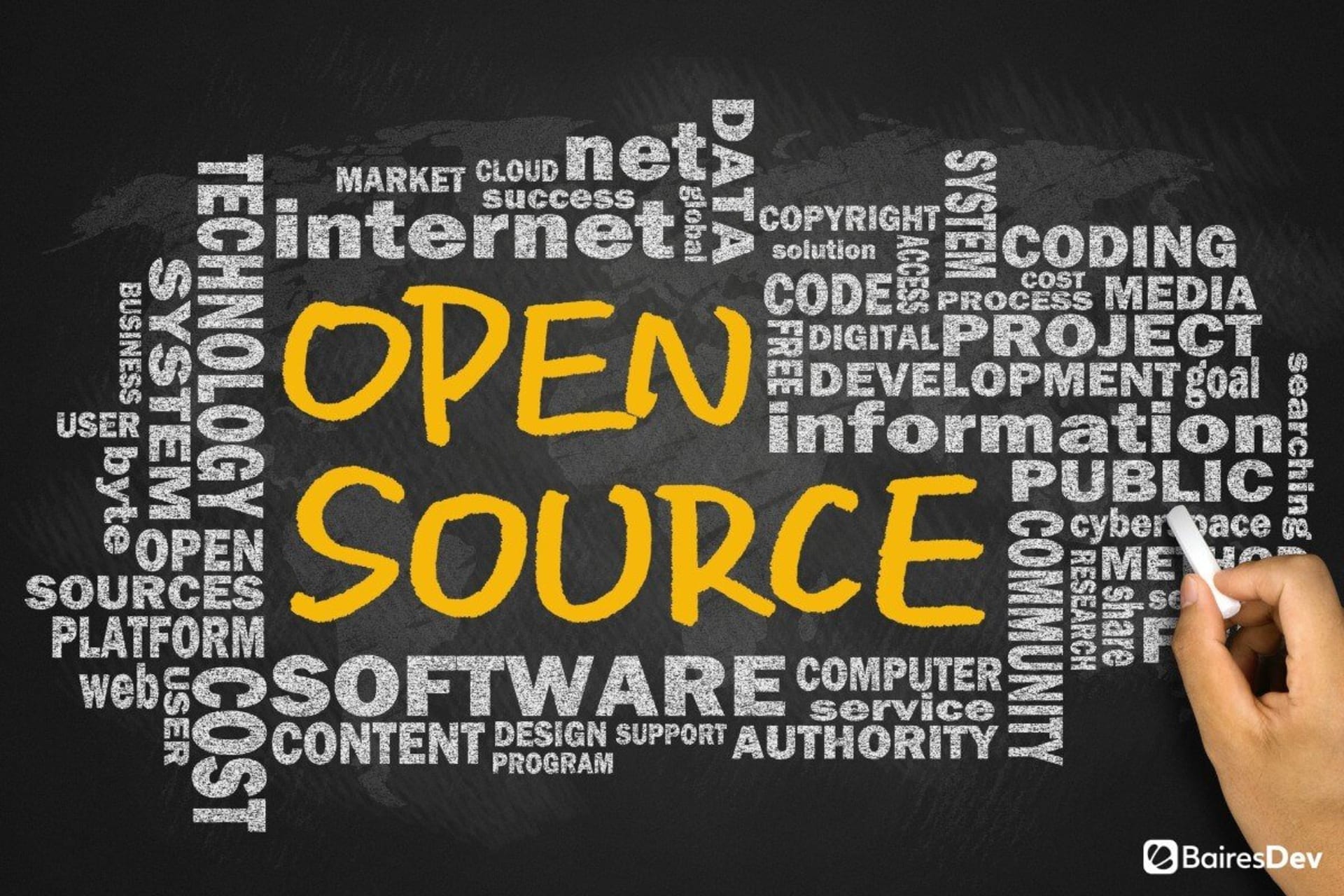In 1983, Richard Stallman, a developer at the Massachusetts Institute of Technology (MIT) pioneered a groundbreaking idea: the concept of accessible, free-to-modify software. This led to the creation of his GNU Public License.
Since that time, “open source” has taken on an entirely new meaning. Today, it isn’t only an idea but a global phenomenon. From Linux to Mozilla Firefox, PHP to WordPress, OpenOffice to Python, open-source tools and technologies abound. And the movement is only growing.
Let’s take a look at the top open-source software trends in 2025.
What Is Open-source Software?
From its early days, open-source software has been, essentially, a crowdsourcing initiative for software developers. The idea behind it is that anyone can contribute to the source code, as well as alter and modify it. Proprietary software, in contrast, can only be modified by the owner of the program.
That’s why open-source software is more or less a group project. It’s also backed by a community of users who can add additional features and make it function even better. Most open-source software is free, too.
That’s not to say there aren’t rules involved. Users must still agree to terms that govern acceptable use and behavior.
Benefits of Open-Source Software
Open-source software offers numerous benefits, including:
Affordability
The majority of open-source software is free. Even when you do need to pay fees, such as for the product you’re trying to build, the expenses you will incur will be far lower than they might be if you use proprietary software.
Community
Open-source software is supported by communities of other developers and tech professionals. This helps with programming because professionals can engage with colleagues, ask questions, troubleshoot issues, and solve problems — while bonding over shared techniques and interests.
Security
Because anyone can modify open-source software, that means when errors or bugs are present in the early versions of the product, community members will be quick to chime in and correct them, contributing to a more secure, usable release.
Stability
Open-source software is considered highly stable. This is because there’s usually a development community working on it, fixing bugs, creating updates, and developing upgrades. This often leads to very stable solutions that can perform at any time.
Flexibility
Because the code behind open-source projects is essentially crowdsourced, it offers flexibility to engineers. They can edit and alter it as they wish, as well as manipulate it to meet their particular needs.
Learning Opportunities
For new developers, open-source software is an opportunity to test out their skills and try something new. It’s freely accessible, providing a canvas on which they can further develop their coding abilities and ask questions of more seasoned developers.
Predictions for 2025
Open-source software has found a place across industries, and you’ll find it in a variety of companies’ stacks. What’s coming this year? Here are the open-source software trends that should be on your radar.
1. The Market Will Grow
As the backbone of many businesses’ operations, open-source software has seen enormous growth in previous years, and it’s on course to expand at an even more rapid pace in the future. A report by MarketsandMarkets projects that the open-source services market, at $21.7 billion in 2021, will reach $50 billion by 2026, a growth rate of 130%.
More and more, businesses of all types will scale their services and operations, partly thanks to open-source software.
2. There Will Be a High Demand for Skills in the Area
According to The 2021 Open Source Jobs Report: 9th Annual Report on Critical Skills, Hiring Trends, and Education, half of the managers plan to increase hiring open-source professionals. But this presents a bit of a challenge to managers as well — they may have difficulty finding professionals in the space with the requisite skills and expertise.
This, perhaps, is why the vast majority are prioritizing the hiring of certified open-source professionals. In fact, 88% of those surveyed gave this response, up from just 57% in 2020. So, basic skills aren’t enough — specializations are critical.
3. Users Will Consider Open-Source Alternatives to Proprietary Software
With open-source software on the rise, it’s no surprise that an increasing number of users are turning to alternatives to proprietary software, taking advantage of the often-free tools that offer similar features. For example, they might consider embracing:
- Audacity over Apple LogicPro
- Gimp over Adobe Photoshop
- Inkscape over Illustrator
- Jami over WhatsApp
- LibreOffice over Microsoft Office
- Nextcloud over Google Drive
- Nixnote over Evernote
- VLC over Windows Media Player
4. Security Will Be Underscored and Heightened
Security is one reason why so many businesses turn to open-source software. And now, developers are paying increasing attention to and heightening security measures. They will focus more on spotting vulnerabilities, leveraging tools that will be able to identify problems, and staying abreast of threats that could wreak havoc on their products.
Moreover, the community surrounding open-source software will continue to work together to guard against attacks, patching and fixing holes that could be infiltrated by cybercriminals.
5. Developers Will Build Open-Source Software DEI in mind
In late 2021, the Linux Foundation released new research on diversity, equity, and inclusion (DEI) trends in open-source software. The good news is that 82% of respondents said they “feel welcome” in open source.
However, there’s still a long way to go in closing equity gaps. The report also revealed that the 18% who said they don’t feel welcome came from disproportionately underrepresented groups, including people with disabilities, transgender people, and racial and ethnic minority groups.
In light of these and other challenges, the open-source community will renew its focus on DEI efforts. The software finds its foundation in accessibility, so it’s only natural that communities will continue to strive to improve the technology, such that equity is central.
Embrace Open-Source Software Trends
Open-source software plays a critical role in the way we work and live our lives. This year, and well into the future, we will see it tackle challenges and reach new heights. What’s next for open-source software? One thing is clear: it’s only gaining popularity and widespread usage.







